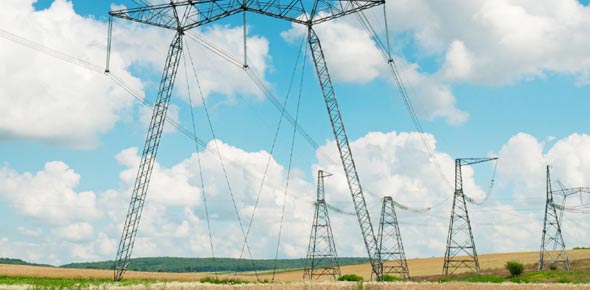Electricity And Magnetism Test

The Electricity and Magnetism Test is an insightful assessment designed to gauge your understanding of these fundamental concepts in physics. This test delves into various topics, including electric circuits, electromagnetic induction, magnetic fields, and more. It aims to evaluate your knowledge of how electricity and magnetism interact, their practical applications, and the underlying principles governing their behavior.
By taking this test, you'll have the opportunity to explore your grasp of electricity and magnetism in depth. Whether you're a student studying physics, an enthusiast eager to expand your knowledge, or simply curious about the mysteries of electricity and magnetism, this Read moretest offers an engaging and educational experience.
Electricity and Magnetism Questions and Answers
- 1.
What makes a temporary magnet?
- A.
2 magnets
- B.
Iron or a steel object
- C.
A magnet
- D.
None of the above
Correct Answer
B. Iron or a steel objectExplanation
A temporary magnet is typically created by placing a piece of iron, such as a nail or a steel object, in close proximity to a permanent magnet. When the iron or steel is exposed to the magnetic field of the permanent magnet, it becomes magnetized temporarily. However, once the external magnetic field is removed, the iron or steel loses its magnetism and returns to its non-magnetic state. This process is reversible, distinguishing temporary magnets from permanent magnets, which retain their magnetism even after the external magnetic field is removed.Rate this question:
-
- 2.
In the dump what would be the best object to pick up iron or steel item?
Correct Answer
Electro magnet, Giant magnet with electricityExplanation
An electro magnet or a giant magnet with electricity would be the best objects to pick up iron or steel items because they both use an electric current to generate a magnetic field. This magnetic field attracts and holds onto iron or steel objects, making it easier to pick them up.Rate this question:
- 3.
When a negative side of a magnet is brought close to another negative side, what happens?
- A.
They attract.
- B.
They repel.
- C.
It makes a temporary magnet.
- D.
None of the above
Correct Answer
B. They repel.Explanation
When two negative charges are brought close to each other, they will repel each other. This is because like charges repel each other due to the electromagnetic force. The negative charges have an excess of electrons, and when they come close, the repulsive force between their electron clouds causes them to push away from each other.Rate this question:
-
- 4.
What material is a magnet made of?
Correct Answer
IronExplanation
A magnet is typically made of iron because iron has magnetic properties. It can be easily magnetized and retains its magnetism for a long time. Iron is a ferromagnetic material, meaning it can be magnetized in the presence of a magnetic field. This property makes iron an ideal choice for creating magnets. Other materials like cobalt and nickel also exhibit magnetic properties, but iron is the most commonly used material for making magnets due to its abundance and affordability.Rate this question:
- 5.
Magnetic fields are only produced by moving electric charges.
- A.
True
- B.
False
Correct Answer
B. FalseExplanation
The statement is false. While magnetic fields are indeed generated by the motion of electric charges, they can also be produced by permanent magnets, which contain aligned magnetic domains that create a magnetic field without the need for moving charges. This phenomenon is fundamental to understanding the behavior of magnets and their interaction with other magnetic materials.Rate this question:
-
- 6.
Describe a temporary magnet and explain how it works.
- 7.
Which of the following correctly defines the direction of the magnetic field around a straight current-carrying wire?
- A.
The magnetic field points towards the wire.
- B.
The magnetic field points away from the wire.
- C.
The magnetic field forms concentric circles around the wire.
- D.
The magnetic field forms radial lines perpendicular to the wire.
Correct Answer
C. The magnetic field forms concentric circles around the wire.Explanation
According to the right-hand rule, the magnetic field around a straight current-carrying wire forms concentric circles, with the direction given by the thumb of the right hand wrapped around the wire, aligning with the current flow.Rate this question:
-
- 8.
Which of the following materials exhibits the strongest magnetic properties at room temperature?
- A.
Copper
- B.
Aluminum
- C.
Nickel
- D.
Silver
Correct Answer
C. NickelExplanation
Nickel, renowned for its ferromagnetic attributes, boasts robust magnetic properties, particularly evident when subjected to magnetization. This characteristic renders it highly suitable for an array of applications, notably in the creation of permanent magnets.Rate this question:
-
- 9.
What is the SI unit of magnetic flux density?
- A.
Gauss
- B.
Weber
- C.
Tesla
- D.
Oersted
Correct Answer
C. TeslaExplanation
The Tesla (T), the standard unit for magnetic flux density in the International System of Units (SI), is named in honor of the pioneering physicist Nikola Tesla. Defined as one Weber per square meter, this unit quantifies the strength of a magnetic field within a given area.Rate this question:
-
- 10.
Which of the following phenomena is associated with electromagnetic induction?
- A.
Joule heating
- B.
Faraday's law
- C.
Hysteresis
- D.
Ohm's law
Correct Answer
B. Faraday's lawExplanation
Electromagnetic induction, as described by Faraday's law, states that a changing magnetic field induces an electromotive force (EMF) or voltage in a nearby conductor, leading to the generation of electric current.Rate this question:
-
Quiz Review Timeline +
Our quizzes are rigorously reviewed, monitored and continuously updated by our expert board to maintain accuracy, relevance, and timeliness.
-
Current Version
-
Feb 13, 2024Quiz Edited by
ProProfs Editorial Team -
Dec 16, 2009Quiz Created by
Mystery110
 Back to top
Back to top


